|
Updated Feb. 1, 2022 It had been a slow afternoon. The kind of afternoon you read about in cheap detective novels. An empty bottle sat on my desk. As empty as a Maalox bottle could be after two too many Taco Bell chalupas. "Why?", I asked myself, knowing full well what the answer would be. Fortunately, before I could answer myself, the door swung open. In walked trouble, Nikonista, by the look of the yellow strap hanging out of her handbag with the big, black letters N...i...k...o...n on it. Your learn to pick up on such subtleties after a few years in this business. "What can I do for you?" "I...I just don't know if you can do anything. It's just...it's just all so annoying." "Annoying, hmm? Sounds serious." The thought flickered in my antacid-addled mind that I would be sorry I had asked. "Well, it was never a problem with my FG..." Her eyes glistened at the thought of something that seemed to be emanating from deep in her past. How consecutive letters of the alphabet could touch someone so deeply was beyond me, but I don't judge prospective clients. Besides, starting easy with the alphabet kept things nice and basic. With Nikon and the alphabet, things always get complicated. And then the numbers. Nikon and the alphabet and numbers. A voluntary shudder racked my body. I knew that before this was over I was going to need another bottle, maybe two... "Do you always twitch like that and sing the alphabet song to strangers?" From her tone wafted a whiff of doubt in my capacity to handle the case. My eyes hardened. "Just for Nikon owners", I grunted, "so you'll get an idea of what you're in for." Her eyes rolled. "Oh...I hope I can handle it." The words dripped like fixer from film. "So, what's in the bag?" Her hand deftly slid in and extracted a nicely-brassed F3 from the understated assemblage of leather-trimmed waxed cotton. This dame had style. "Nice piece.", I murmured as she handed it over. My mind raced. HP on the bottom of the finder...that made it a DE-3. Another consecutive set of letters. Someone was looking out for me today. I turned the body over. The black motor drive cover was in place...good. You don't know how many mugs come in here with a missing motor drive cover and a wasted roll of film. It tears me up every time to see another twenty greenbacks go down the drain, just because they didn't know to check for it when they bought the thing. Everything looked fine. I set the camera on the counter. "So, what's the problem?" Her hand disappeared in to the bag once more and emerged grasping a Speedlight. It was an SB-25. The dame had taste, I had to admit that much. Smarts, too. The SB-25 was a forgotten sister compared to the SB-26 and -28, but it could be had for fifty greenbacks instead of a C-note. And not give up anything of substance. "This worked fine on my FG, what's it going to take to get it to play nice with my F3?" I pride myself on maintaining a cool sense of calm under any circumstances. My face betrayed no hint of emotion as I excused myself from the room and ran down the hallway, downed another half bottle, and made my way back to the office. She did not seem impressed. She had no idea she would be sorry she had asked. "Do you have some kind of gastrointestinal problem?" "Yeah, something like that." I'm not in the business of impressing dames, especially when it comes to intestinal fortitude. I'm in the camera business. I tried to eloquently steer the conversation back on topic. "So you want to patch things up between your F3 and the Speedlight? How much time have you got?" "I don't care how long it takes, I just want satisfaction." "That will be 25 greenbacks at a minimum, plus expenses. Maybe as much as a C-note." "Will you take a cheque?" "I work strictly cash. Or by the case." "Cash I understand. But what do you mean by the case?" "Until I can kick this chalupa habit, a case of Maalox. Come to think of it, I'll need two bottles to start." "You sound like a case yourself." "Those are my terms, take it or leave it. There's a drugstore around the corner." Her sagging shoulders and a resigned sigh announced the acceptance of my terms. The dame was obviously desperate. Somehow, the dames I deal with always seem to be desperate. It comes with the territory. She was back in five minutes. She tossed a brown paper bag on the counter. I motioned for her to take a seat. She gave me a dubious look.. "You'll thank me later." Her expression suggested that I would be smart not to count on that. What follows are the boring details of the case. Feel free to skip to the end if you can't stand the suspense ;-). When it comes to the F3 and flash, anyone could become desperate. It was the last professional Nikon SLR to use the proprietary F flash mount. In 1959, when Nikon introduced its seminal SLR, the F, they faced a conundrum. On their existing S-series of rangefinders, they had an ISO-style flash mount with a proprietary electrical contact mounted close to the center of the top plate. This was not going to work on the F, with its interchangeable centrally-mounted viewfinders. Nikon engineers felt that the clip-latching finder mechanism was not strong enough to deal with the extra leverage of a flash unit sitting on top and getting bumped. So the solution they chose was to make a separate twin-rail flash coupler that was concentric to the film rewind knob. That took care of the security of the flash mount, but it would introduce a number of dissonances...dissonances that would not present too much of a problem with the F & F2 with their simple manual flash couplings, but would prove more thorny with the TTL flash-enabled F3. A few complications arose from Nikon's decision to adopt a different flash mount for the F instead of the ISO mount that it had used on the S-series and would continue to use on its non-professional SLRs. The first thing that they had to deal with was providing a way to use a decade's-worth of ISO mount BC-series flash units with the new F. Their solution: the Flash Unit Coupler, which provided a direct mechanical and electrical connection. In other words, an adapter. It would be the first of a long line of adapters. Things would stay fairly straightforward for the next 20 years. In late-1971, the Flash Unit Coupler was replaced by an updated AS-1 flash coupler with the introduction of the Nikon F2. The big change from the original adapter was that the AS-1 now used the ISO-standard X-sync electronic contact (termed a "hot" shoe) rather than the "cold" (non-electronic) ISO shoe with the separate Nikon-specific X-sync contact of the Flash Unit Coupler. By this time Nikon had been producing flash units that directly coupled to the F cameras for over five years. But many pros were now carrying Nikkormat FTs and FTns as backup bodies to their Fs & F2s and those models used an ISO-style cold accessory shoe. So Nikon brought out the AS-2 coupler, which allowed the Nikon BC-7 flash unit to be mounted onto the Nikkormats (or any other ISO shoe-equipped SLR) with a PC cable to provide X-sync. So after two decades, there were three flash adapters. Even I can keep that straight...I think ;-). A second issue arising from the adoption of the F flash mount was that easy access to the film rewind knob was compromised. Every time film needed to be rewound and reloaded, the flash unit would have to be removed. This was something Nikon F & F2 users learned to live with. But the F3 would bring another level of headaches with this system. Speak of the devil. The F3 is where adapters and compatibility and limited compatibility and TTL and everything else got real messy. There would end up being twice as many adapters for the F3 and its compatible flashes than the previous two F-models combined. All of the compromises in the F flash mount came together in the F3. There were two main reasons for this: 1) although Nikon retained the flash mount, they changed the flash contact(s) location from the rear of the mount to the front, and 2) they incorporated a film ISO/Exposure Compensation dial with the flash mount for the first time in an F-camera. This meant new couplers to accommodate the F/F2 flash units to the F3, new couplers for the F3 to ISO-style mounts, and vice versa. We will proceed adapter by adapter in order to try and maintain some semblance of order :-). To see pictures of the various adapters check out this page on the Photography in Malaysia website. 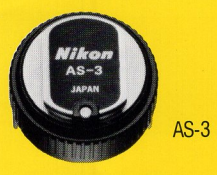 Nikon F3 Flash Adapters
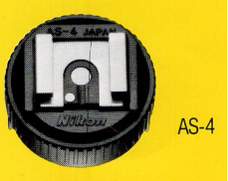
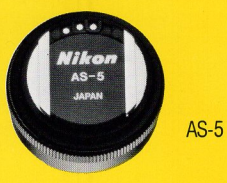
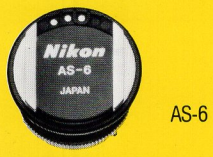
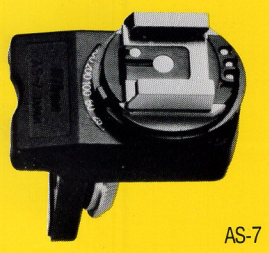
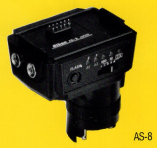
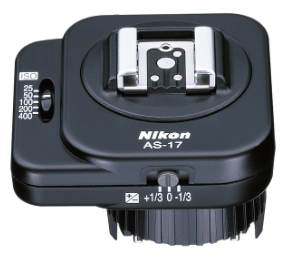
What About the Aftermarket? There was a Vivitar adapter for the F3 to enable the use of standard ISO flash units. The unique feature of the Vivitar flash coupler was that it used all three pins of the F3 but not the mechanical ISO dial linkage. The ISO shoe on the coupler looked like a modern Nikon TTL shoe except that the front right contact is missing. This contact is for the Nikon monitor circuit, which is not required for TTL flash. It is the right rear contact that connects the flash unit to the F3's meter. But how could the Vivitar provide TTL without the mechanical ISO linkage used by the Nikon Speedlights? By incorporating the ISO setting on the flash. The way Vivitar (and certain other aftermarket flash suppliers such as Sunpak) dealt with providing flash units to fit the various OEM cameras in the early-1980s was to have a basic flash head with dedicated plug-in modules that used the specific flash contact layout for each OEM (pre-dating Nikon's similar approach with the SB-16 and its F3/AS-8 and ISO/AS-9 modules). The first dedicated Nikon module that Vivitar produced was the DM/N, and it made provision for the viewfinder flash signal, but nothing more. It was compatible with the Vivitar 3500, 3700, and 4600 flash heads. With the introduction of the FG, Vivitar came out with the TTL-capable DM/N2. This module incorporated the an ISO setting scale from 25-400 (sound familiar?) along with an "FG" setting for the new Nikon camera-controlled TTL flash metering. For the F3, Vivitar had the photographer set the ISO manually on the DM/N2 so that the flash could determine when to quench. One drawback was that the scale was only adjustable in full stops, rather than the 1/3 stops of the F3's and AS-7's ISO dials. So there was the same range of exposure available (albeit with less precision). Another issue was the quality of the adapter, with many users complaining of a less secure interface between the camera and flash coupler than with the OEM Nikon adapters. Bottom line: it was another option for TTL flash with an ISO flash and the F3, but it required a very specific module from Vivitar to do that with some slight limitations. Nowadays, the Vivitar adapter costs as much as a Nikon AS-4 non-TTL coupler that will provide the same level of Auto and Manual flash capability with a more secure fit. DM/N2 modules can still be had for quite reasonable prices and often attached to a 3500, 3700, or 4600 flash head. Conclusion In one word: compromise. With any adapter, there is always going to be a trade-off. You want access to the ISO/EC dial on the F3? You will have to live with a tacked-on AS-7 that will not give you TTL with any Nikon Speedlight aside from three 30+ year-old flash designs. You want TTL with anything from an SB-15 to an SB-600? You'll have a whole unit that needs to be taken off whenever you change film and no access to EC without doing the same. Something to ask oneself at this point is: "Do I even want to bother with an F3 for serious flash photography?" You can get good results, but it will take more effort (and entail more risk, as you will see below). It's up to you to decide whether the effort is worth your while. If you decide you do want to maximize your F3's flash capability, your best bet are the two newest dedicated F3 units: the SB-16A or the SB-17. That way you skip all of the adapter agony, and only deal with pulling the flash off to change film, adjust ISO, and perform EC. Addendum 11/18/2019 - Commenter Dean Cho has brought to light an even more serious reason to forgo flash with the F3. Nikon's decision to include aperture-priority exposure capability with the F3 necessitated the addition of the Functional Resistance Element (FRE), a metallic thin-film resistor deposited on a hard glass baseplate. The FRE was used by Nikon from the introduction of the Nikkormat EL for over two decades in their manual focus aperture-priority SLRs. The FRE had to be located in close proximity to the ISO adjustment, which on the F3 was located in the same vicinity as the flash mount (not the case with any of their other FRE-equipped models). As Dean points out in the comment section below, with the FRE located immediately below the top plate and concentric to the rewind shaft, a reasonably strong blow impacting a mounted flash could deform the top plate to the point of contacting the FRE and cracking it, basically disabling the camera. FREs are not free nor are they growing on trees. You would have to cannibalize one from another body, in a best-case scenario.That clinches it for me when it comes to the F3 and body-mounted flash: it's not worth it for me, personally. Not when there are a dozen or more other 35mm Nikons (the FE2, FA, F4, F-801(s), F90(X), F5, F100, F80 quickly come to mind) that offer seamless body-mounted TTL flash operation. The dame's right arm hung like a cheap microfiber lens cloth forgotten on a clothesline in monsoon season. An empty bottle lay on the floor underneath the chair. Her eye twitched ever so involuntarily as she slumped forward to reach for her bag. "Stop...just stop. I can't stand anymore. I'm sorry I asked." "I'm sorry you asked, too. You're not the first, and I doubt you'll be the last. So what's it going to be?" "I don't know. I don't care. Maybe..maybe...I'll just forget the whole thing." Her voice was beginning to quaver and her eyes were moist. I offered her the cheap microfiber lens cloth I keep on me for such occasions. She extended a trembling left hand to take it as she struggled to her feet. She swayed slightly as she headed for the door. "That might be smartest thing you said today. But what do I know? I'm just a two-bit camera junkie, with a two-chalupa-a-day habit, and...hey, where's my other bottle of Maalox?"
4 Comments
Dean Cho
11/18/2019 12:36:49 pm
The F3 flash coupler represents a design shortcoming. If one mounts a decent sized flash in the coupler and the flash is bumped reasonably hard, the leverage and impact can easily crack the FRE chip mounted below the rewind knob. This renders the camera largely inoperable. Because replacement FRE chips are difficult to find these days, the camera can effectively be rendered unusable.
Reply
C.J. Odenbach
11/18/2019 01:20:33 pm
Excellent point, Dean. I must admit that the potential for damage to the FRE had never entered my mind previously, but it makes me even less inclined to use flash with the F3, period. I am going to update the article and direct attention to your comment. Thanks for taking the time to make a very valid point about what could be the most serious drawback to the F3’s flash configuration.
Reply
Izzy vL
1/24/2020 05:46:31 am
You deserve a cookie for that novel around it alone, haha. Excellent writing, and an informative post as well.
Reply
C.J. Odenbach
1/24/2020 08:32:35 pm
Cookie? Me love cookies, um-yum-yum-yum. Thanks for the kind words, Izzy. But I dunno about an AS-17 on top of an AS-7…that might entail a whole box of cookies to muster the gumption to try it ;-). I like your setup of the SC-14 with the SB-17 for a couple of reasons: 1) It gets the flash further from the camera for better red-eye reduction, and 2) there will be less chance for damage to your F3 with less mass being concentrated over the flash mount. Please let us know how it works out.
Reply
Your comment will be posted after it is approved.
Leave a Reply. |
C.J. OdenbachSuffers from a quarter-century and counting film and manual focus SLR addiction. Has recently expanded into 1980's AF point and shoots, and (gack!) '90s SLRs. He even mixes in some digital. Definitely a sick man. Categories
All
Archives
June 2024
|
 RSS Feed
RSS Feed